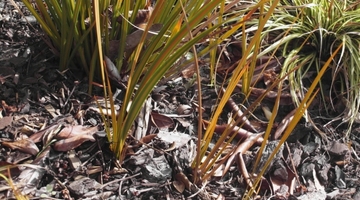Grafting and budding are standard techniques used for propagating new apple cultivars. These techniques allow breeders to grow multiple plants of exactly the same genetic material (clones). Here, Richard Volz of Plant & Food Research (PFR) explains how these techniques are carried out at the PFR Hawke’s Bay orchard.
Transcript
Richard Volz (Plant & Food Research)
Propagation by grafting or budding is a standard practice. It’s been around in apple culture for thousands of years, and it’s the means by which a variety can be essentially cloned so that we can have large plantings of the same variety, exactly the same genetic material.
We use grafting usually when there is quite a lot of wood available from the scion to go onto the rootstock. A piece of dormant graft wood is taken from the tree that we are interested in – a stick possibly 2 or 3 buds long – and then a notch is made in the rootstock, a complementary notch is made in the bottom of the scion graft wood and the 2 parts are essentially pasted together and taped together. What is important is that the cambium of both parts are lined up together, and it’s where the cambiums are lined up together that callusing occurs and essentially the woods, the cells merge together and you get 1 plant.
The budding is usually done in the field on rootstocks that are already planted. What usually happens is, in the winter before, a few months before dormancy time, a bit of wood is taken from the scion, and in October, a bud is taken from that scion and placed into a notch on the side of the rootstock in the field. It’s taped over and – again the same principle as in grafting – the bud and the rootstock callus together. The rootstock is cut back to just above the bud, and then that bud is forced to grow away.



